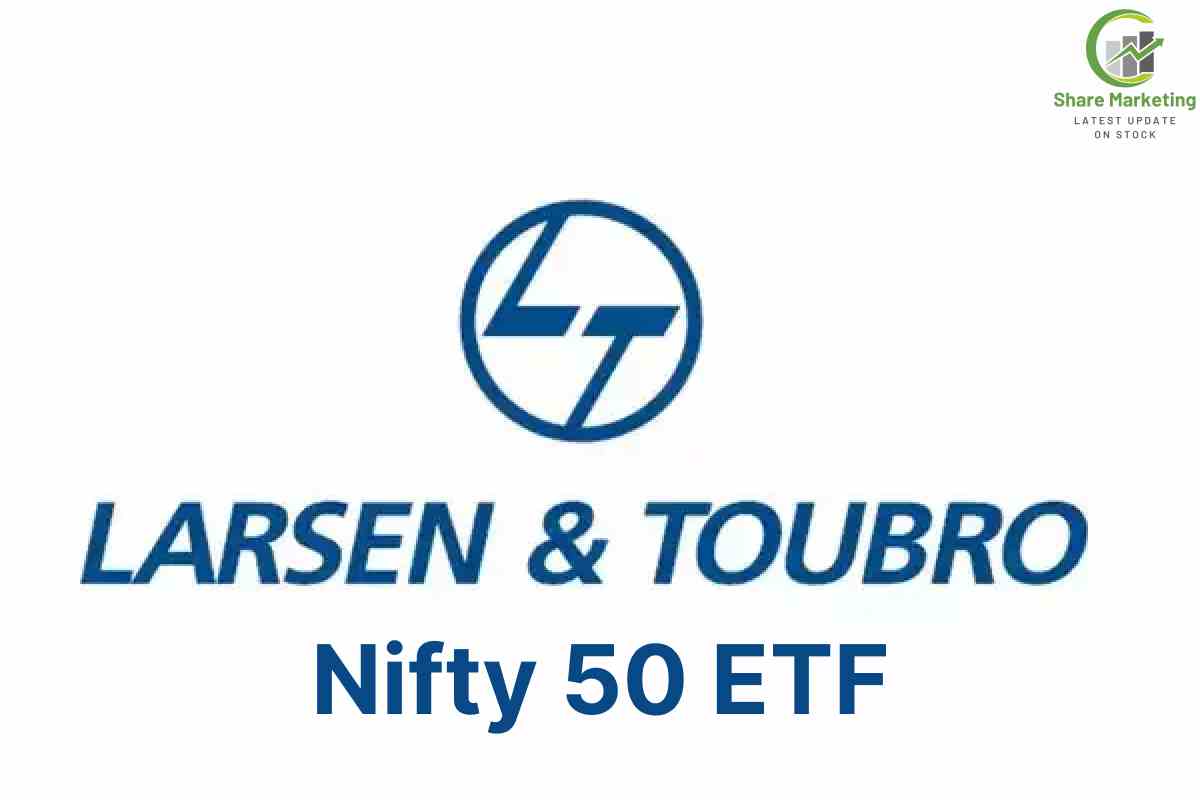यहाँ Aditya Birla Sun Life Gold ETF के बारे में पूरी जानकारी दी हैं।
Aditya Birla Sun Life Gold ETF एक Exchange Traded Fund (ETF) है जो सोने (Gold) में निवेश करता है। इसका मतलब है कि जब आप इसमें पैसा डालते हैं, तो आपका पैसा असली सोने में निवेश होता है, और यह Share Market के जरिए खरीदा और बेचा जा सकता है।
यह ETF उन Investors के लिए अच्छा है जो सोने में निवेश करना चाहते हैं लेकिन सोना physically खरीदने और सुरक्षित रखने की झंझट नहीं लेना चाहते।
मुख्य विशेषताएँ (Key Features)
निवेश का प्रकार:
- Gold ETF (सोने में निवेश)
Asset Management Company (AMC):
- Aditya Birla Sun Life Mutual Fund
NFO / Launch:
- यह ETF पहले ही बाजार में उपलब्ध है और आप इसे NSE और BSE से ट्रेड कर सकते हैं।
Minimum Investment:
- इसे शेयर की तरह खरीदा जा सकता है, इसलिए कम से कम एक यूनिट खरीदनी होती है।
Expense Ratio (प्रबंधन शुल्क):
- सालाना लगभग 0.75% – 1% के बीच। यह शुल्क AMC द्वारा आपके निवेश से काटा जाता है।
Liquidity (तरलता):
- क्योंकि इसे NSE/BSE पर ट्रेड किया जा सकता है, इसे आसानी से खरीदा और बेचा जा सकता है।
Returns (लाभ):
- यह सोने की कीमत के अनुसार ही बढ़ता या घटता है।
- अगर सोने की कीमत बढ़ती है, तो ETF का मूल्य भी बढ़ेगा, और घटने पर घटेगा।
Taxation (कर संबंधी जानकारी):
- Short-term capital gains (1 साल से कम): आपकी आयकर स्लैब के अनुसार टैक्स।
- Long-term capital gains (1 साल से ज्यादा): 20% LTCG टैक्स + indexation benefit।
Is Aditya Birla Sun Life Gold ETF Good?
क्या Aditya Birla Sun Life Gold ETF एक अच्छा निवेश है?
मुख्य फायदे
- सोने की कीमतों से जुड़ा हुआ
यह ETF सोने की कीमतों के अनुसार चलता है, जिससे सोने में निवेश का लाभ मिलता है बिना उसे फिजिकली रखने के। - कम खर्च (Expense Ratio)
इसका खर्च अनुपात (Expense Ratio) केवल 0.47% है, जो कि इस श्रेणी के अन्य फंड्स से कम है। - उच्च तरलता (Liquidity)
इसे NSE और BSE पर आसानी से खरीदा और बेचा जा सकता है, जिससे निवेशकों को तरलता मिलती है। - न्यूनतम निवेश की आवश्यकता नहीं
इसमें SIP या lumpsum निवेश के लिए न्यूनतम राशि की कोई बाध्यता नहीं है।
Aditya Birla Sun Life Gold ETF Top Holdings
Aditya Birla Sun Life Gold ETF एक एक्सचेंज ट्रेडेड फंड (ETF) है जो सोने की कीमतों का अनुसरण करता है। इसका मुख्य उद्देश्य निवेशकों को सोने में निवेश करने का एक सरल और सुरक्षित तरीका प्रदान करना है।
इस ETF की प्रमुख होल्डिंग्स निम्नलिखित हैं:
- फिजिकल गोल्ड (Physical Gold): यह ETF मुख्य रूप से 99.5% शुद्धता वाले फिजिकल गोल्ड में निवेश करता है।
- कैश और समकक्ष (Cash & Equivalents): ETF में कुछ प्रतिशत राशि कैश और कैश समकक्षों में भी रखी जाती है, जो लेन-देन और अन्य आवश्यकताओं के लिए उपयोग होती है।
कुल मिलाकर, इस ETF की होल्डिंग्स सोने और कैश समकक्षों में केंद्रित हैं, जिससे यह सोने की कीमतों के उतार-चढ़ाव के साथ मेल खाती है।
Aditya Birla Sun Life Gold ETF Returns
यहाँ Aditya Birla Sun Life Gold ETF के रिटर्न्स (Returns) की जानकारी दी गई है:
Aditya Birla Sun Life Gold ETF के रिटर्न्स
| समयावधि | रिटर्न (%) | श्रेणी औसत रिटर्न (%) |
|---|---|---|
| 1 वर्ष | 60.17% | 59.81% |
| 3 वर्ष | 31.99% | 31.90% |
| 5 वर्ष | 17.96% | 17.70% |
| लॉन्च से अब तक | 11.47% | – |
निवेश की समझ (Understanding of Investments):
- 1 वर्ष का रिटर्न: पिछले एक वर्ष में, इस ETF ने 60.17% का रिटर्न दिया है, जो श्रेणी औसत से थोड़ा अधिक है।
- 3 वर्ष का रिटर्न: तीन वर्षों में, इसने 31.99% का रिटर्न प्रदान किया है, जो श्रेणी औसत के समान है।
- 5 वर्ष का रिटर्न: पाँच वर्षों में, रिटर्न 17.96% रहा है, जो श्रेणी औसत से थोड़ा अधिक है।
- लॉन्च से अब तक: लॉन्च के बाद से, इस ETF ने 11.47% का रिटर्न दिया है।

Aditya Birla Sun Life Gold ETF Direct Growth
यहाँ Aditya Birla Sun Life Gold Fund – Direct Plan – Growth Option की जानकारी दी गई है:
Aditya Birla Sun Life Gold Fund – Direct Plan – Growth Option के रिटर्न्स
| समयावधि | निवेश राशि (₹) | वर्तमान मूल्य (₹) | कुल रिटर्न (%) | वार्षिक रिटर्न (%) |
|---|---|---|---|---|
| 1 वर्ष | ₹12,000 | ₹16,740.36 | 39.5% | 80.15% |
| 2 वर्ष | ₹24,000 | ₹38,693.64 | 61.22% | 53.64% |
| 3 वर्ष | ₹36,000 | ₹64,105.09 | 78.07% | 41.26% |
| 5 वर्ष | ₹60,000 | ₹1,22,276.03 | 103.79% | 28.91% |
| 10 वर्ष | ₹1,20,000 | ₹3,36,250.40 | 180.21% | 19.55% |
निष्कर्ष:
यदि आप सोने में निवेश करना चाहते हैं और उसे फिजिकली रखने की झंझट से बचना चाहते हैं, तो Aditya Birla Sun Life Gold Fund – Direct Plan – Growth Option एक अच्छा विकल्प हो सकता है। यह फंड सोने की कीमतों के उतार-चढ़ाव के साथ मेल खाता है और अच्छे रिटर्न्स प्रदान करता है। इसके अलावा, इसकी न्यूनतम निवेश राशि ₹100 है, जिससे यह छोटे निवेशकों के लिए भी उपयुक्त है।
Aditya Birla Sun Life Gold ETF की Strengths (फायदे)
1) सीधा सोने में निवेश
- यह ETF सीधे शुद्ध सोने में निवेश करता है। इससे आपको फिजिकल सोना रखने की जरूरत नहीं और आप सोने के रिटर्न का फायदा उठा सकते हैं।
2) कम खर्च (Low Expense Ratio)
- अन्य गोल्ड फंड्स की तुलना में इसका प्रबंधन शुल्क कम है, जिससे आपके निवेश पर अधिक लाभ होता है।
3) उच्च तरलता (High Liquidity)
- इसे NSE और BSE पर शेयर की तरह खरीदा और बेचा जा सकता है, इसलिए पैसा जल्दी निकाला जा सकता है।
4) छोटे निवेशकों के लिए उपयुक्त
- न्यूनतम निवेश राशि कम है, इसलिए छोटे निवेशक भी आसानी से इसमें निवेश कर सकते हैं।
5) सरल और पारदर्शी (Transparent)
- निवेश प्रक्रिया आसान है और ETF की होल्डिंग्स पूरी तरह पारदर्शी होती हैं।
Aditya Birla Sun Life Gold ETF की Risks (जोखिम)
1) सोने की कीमत का उतार-चढ़ाव
- चूंकि ETF सोने की कीमतों से जुड़ा है, इसलिए सोने की कीमत गिरने पर ETF का मूल्य भी घट सकता है।
2) शेयर मार्केट का जोखिम
- ETF को शेयर मार्केट के माध्यम से खरीदा और बेचा जाता है, इसलिए बाजार की अस्थिरता इसका मूल्य प्रभावित कर सकती है।
3) लंबी अवधि में सीमित रिटर्न
- सोने में निवेश लंबे समय में स्टॉक या इक्विटी फंड्स की तुलना में कम रिटर्न दे सकता है।
अंतिम राय (Final Verdict)
Aditya Birla Sun Life Gold ETF उन निवेशकों के लिए अच्छा विकल्प है जो सोने में निवेश करना चाहते हैं, लेकिन फिजिकल सोना रखने की झंझट और सुरक्षा की चिंता से बचना चाहते हैं।
- यह ETF सीधे सोने में निवेश करता है, इसलिए आपको सोने की वास्तविक कीमत का फायदा मिलता है।
- इसे NSE और BSE पर शेयर की तरह खरीदा और बेचा जा सकता है, जिससे तरलता बहुत अच्छी है।
- प्रबंधन शुल्क कम है, जिससे निवेश पर अधिक रिटर्न मिलने की संभावना है।
- छोटे निवेशकों के लिए भी यह आसान और सुविधाजनक विकल्प है।
ध्यान देने योग्य बातें:
- इसकी कीमत सोने की मार्केट वैल्यू पर निर्भर करती है, इसलिए उतार-चढ़ाव हो सकता है।
- लंबी अवधि में स्टॉक्स की तुलना में रिटर्न सीमित हो सकते हैं।
ICICI Prudential Nifty 100 ETF: A Complete Guide to Beginners
Is Nippon India Silver ETF a Good Investment? Complete Analysis
Everything You Need to Know About Invesco India Gold ETF Returns & Performance



